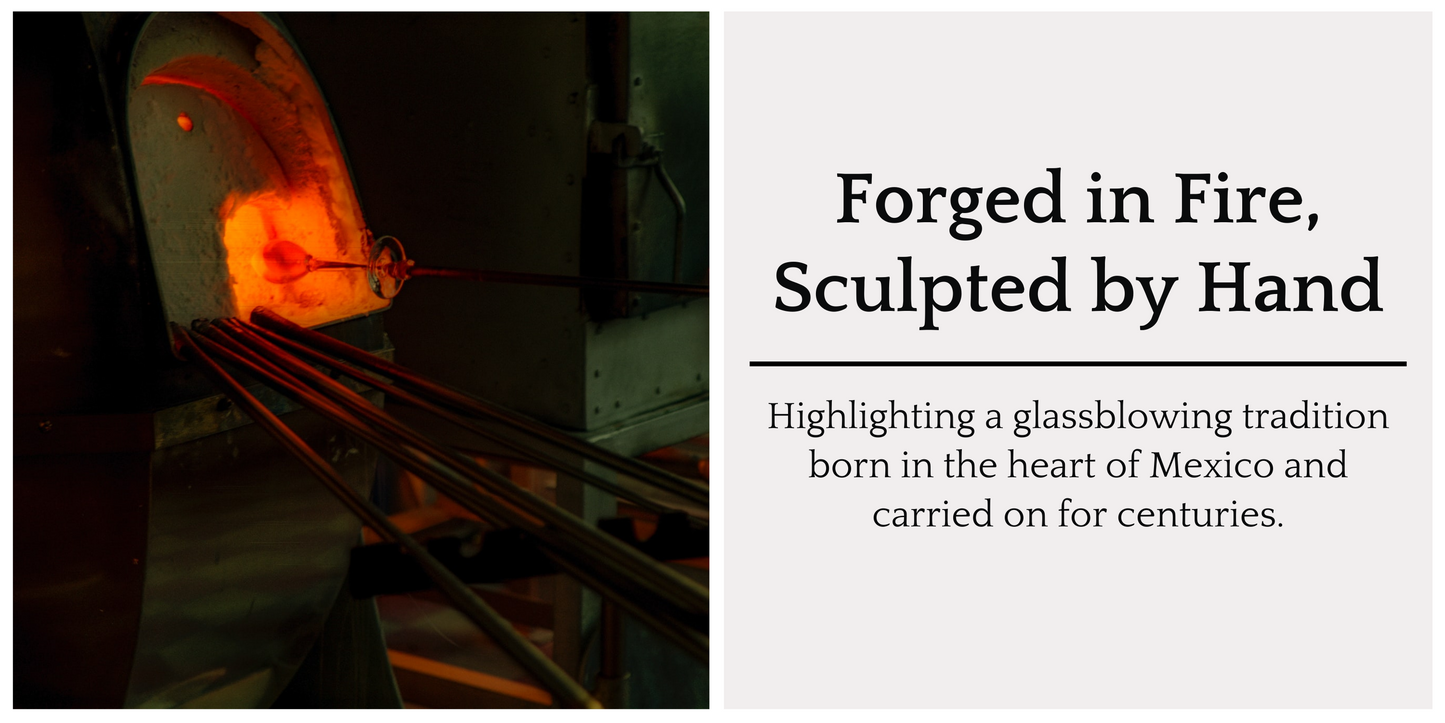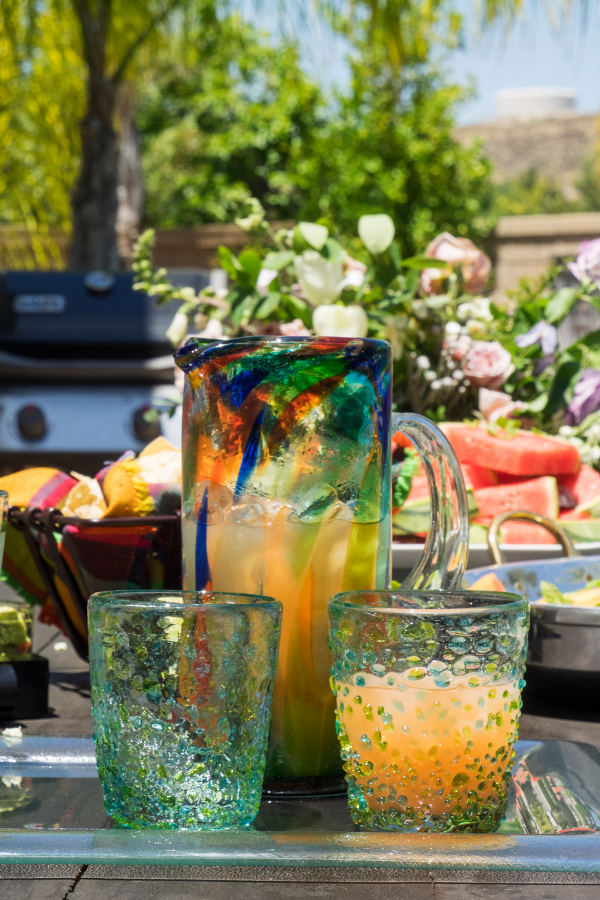
Mexican glassblowing is a centuries-old art form that has a rich and varied history. It can be traced back all the way to the origins of glassblowing, which is believed to have been developed in the 1st Century in certain regions of the Middle East. It quickly became a respected craft and a vital resource, spreading to many of the early empires of Man and continuing to be refined and passed down from generation to generation. In Mexico, the art of glassblowing was introduced by the Spanish in the 16th century, and it has since become an integral part of Mexican culture and craftsmanship.
The process of glassblowing involves melting silica sand, soda ash, and lime in a furnace to create a molten glass mixture. This mixture is then shaped and molded using a variety of tools and techniques, such as blowing through a hollow iron pipe or using a wooden or metal rod to shape the glass.
One of the most famous centers of glassblowing in Mexico is the city of Puebla, located about 80 miles southeast of Mexico City. Puebla has a long tradition of glassblowing, dating back to the 16th century when the Spanish introduced the art form to the region. Puebla is known for its beautiful blown glass figurines, vases, and other decorative objects, many of which are inspired by traditional Mexican motifs and designs.
Another important center of glassblowing in Mexico is the state of Jalisco, which is located in western Mexico. Jalisco is home to a number of traditional glassblowing workshops, and it is known for its colorful and intricate blown glass objects, such as chandeliers, lampshades, and decorative bowls.
The art of Mexican glassblowing has evolved over the centuries, and today it is a thriving industry that employs many skilled craftsmen and women. In addition to traditional blown glass objects, Mexican glassblowers also create a wide range of contemporary glass artwork, including sculptures, installation pieces, and functional objects such as vases and wine glasses.
The process of creating a blown glass object begins with the gathering of the raw materials. These include silica sand, soda ash, and lime, which are melted together in a furnace to create a molten glass mixture. The glassblower then gathers a small amount of this mixture onto the end of a hollow iron pipe called a "blowpipe."
Next, the glassblower uses the blowpipe to shape and mold the glass by blowing air into it and rotating the pipe. The glass begins to take on a more solid form as it is cooled by the air, and the glassblower can use a variety of tools and techniques to shape and manipulate the glass as it cools.
Once the glass has cooled to a certain point, it can be removed from the blowpipe and further shaped and molded using a variety of hand tools, such as tweezers, pliers, and wooden or metal rods. The glassblower may also add decorative elements to the object by adding strips of colored glass or by applying enamel or gold leaf.
Once the glass object has been shaped and decorated, it is placed in an annealing oven to slowly cool down. This helps to strengthen the glass and prevent it from cracking or breaking.
Mexican glassblowing is a highly skilled art form that requires years of training and practice to master. Many Mexican glassblowers are part of a long tradition of glassblowing that has been passed down from generation to generation. In addition to traditional glassblowing techniques, many Mexican glassblowers also incorporate modern technologies and materials into their work, creating unique and innovative pieces of art that are highly prized by collectors and art enthusiasts around the world.
Today, Mexican glassblowing continues to thrive as an important part of the country's cultural and artistic heritage. It is a testament to the skill and ingenuity of Mexico's glassblowers, who have taken this art form beyond their borders to the world's stage and global marketplace.
Every time you fill an Orion's Table glass, you are not only experiencing the charm of a functional piece of centuries old art, but you are also helping to keep that cherished craft alive and well -- and for that, we thank you!

